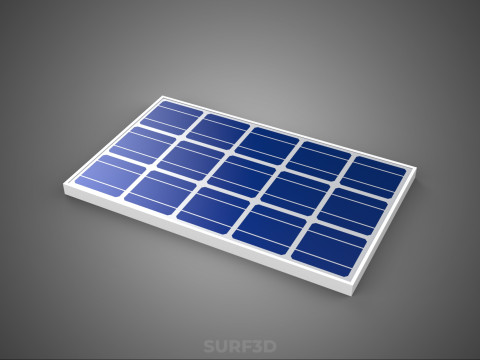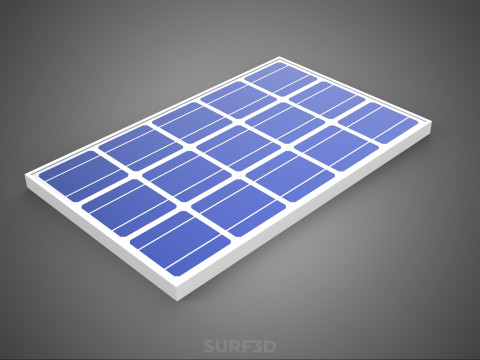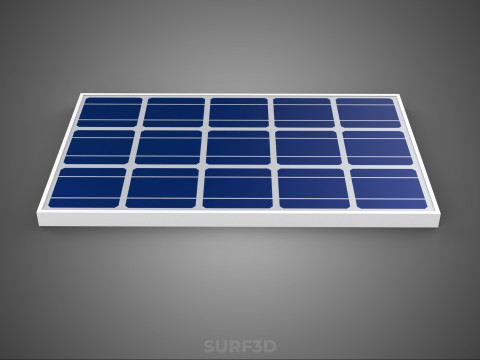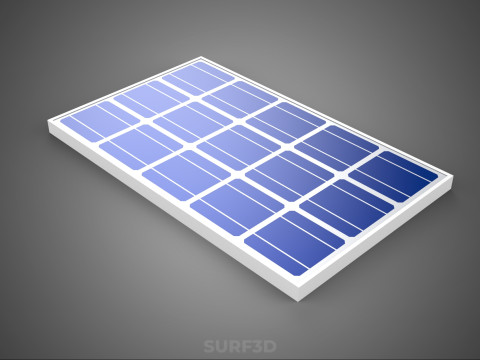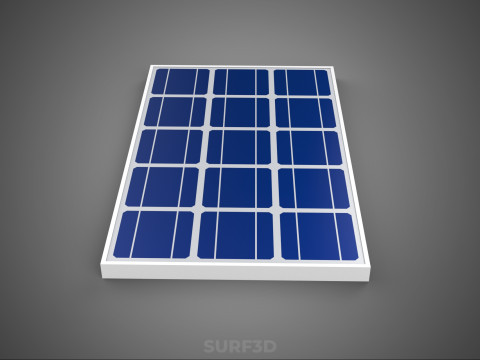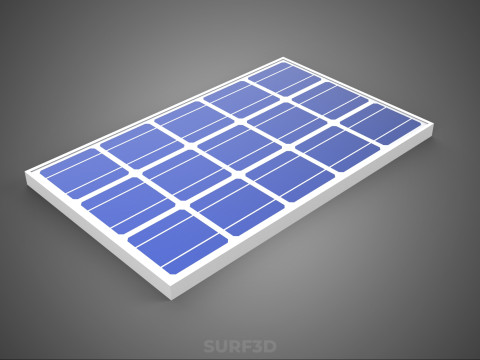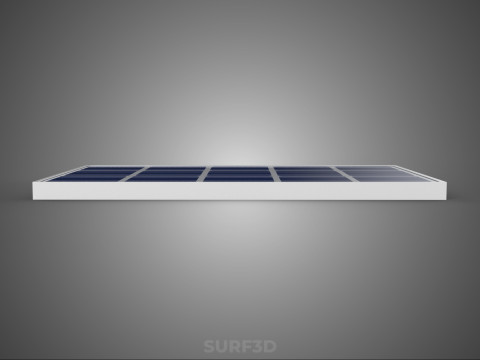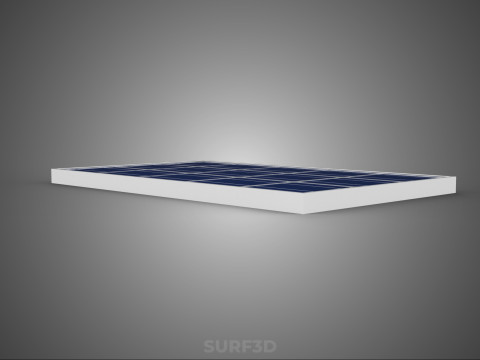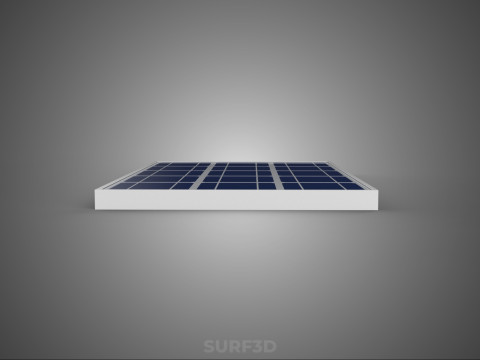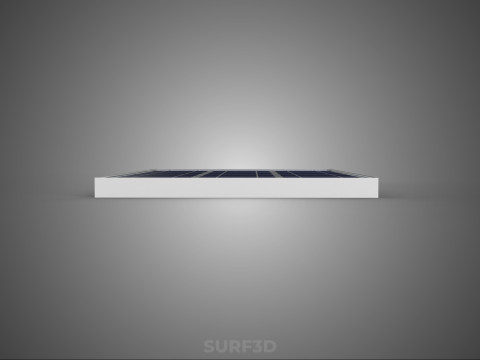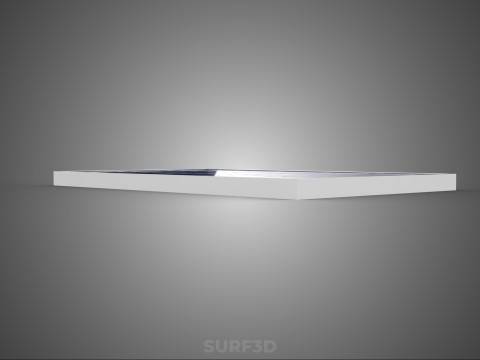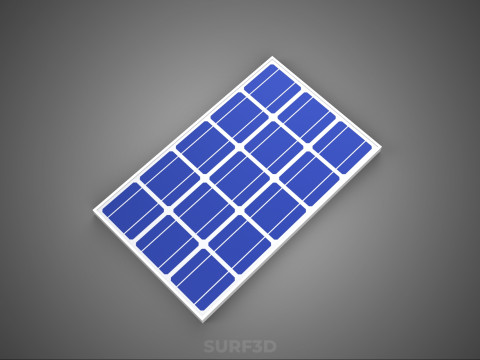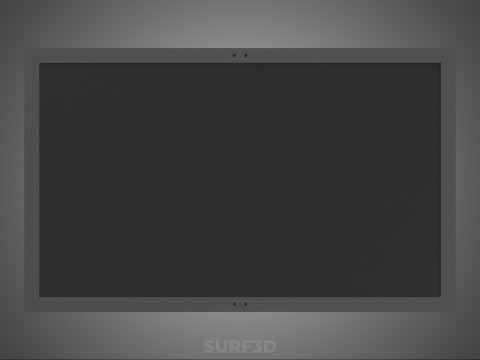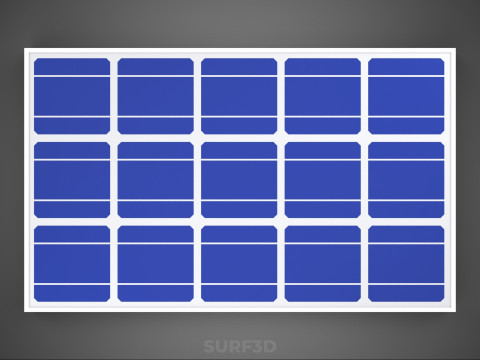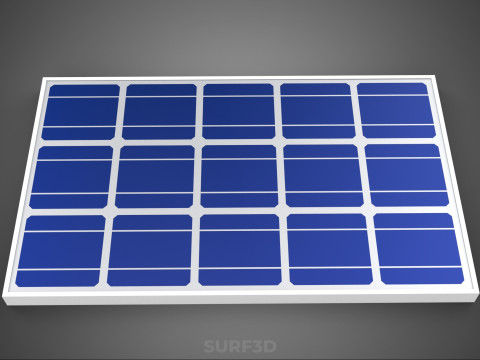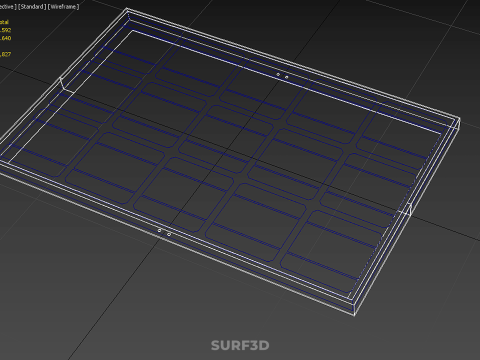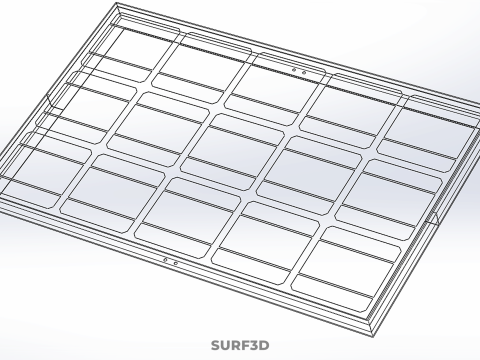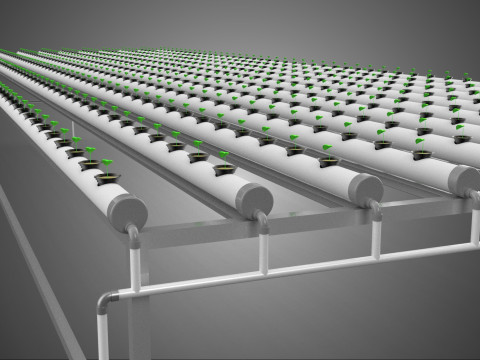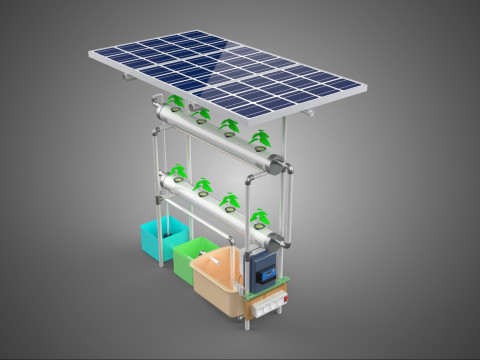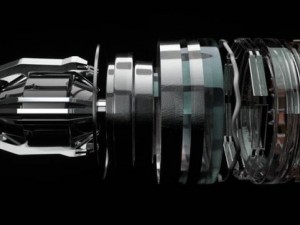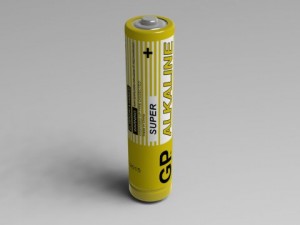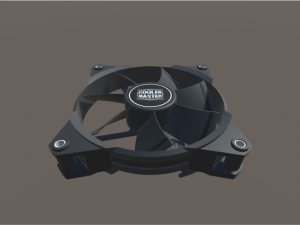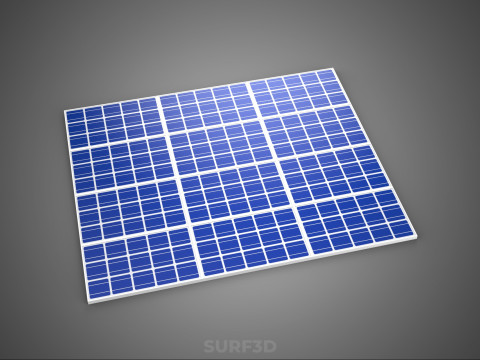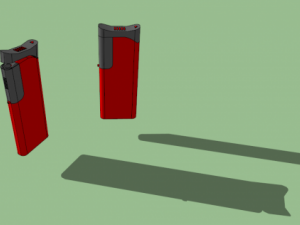長方形太陽電池 太陽光発電パネル 再生可能太陽光エネルギー 3Dモデル
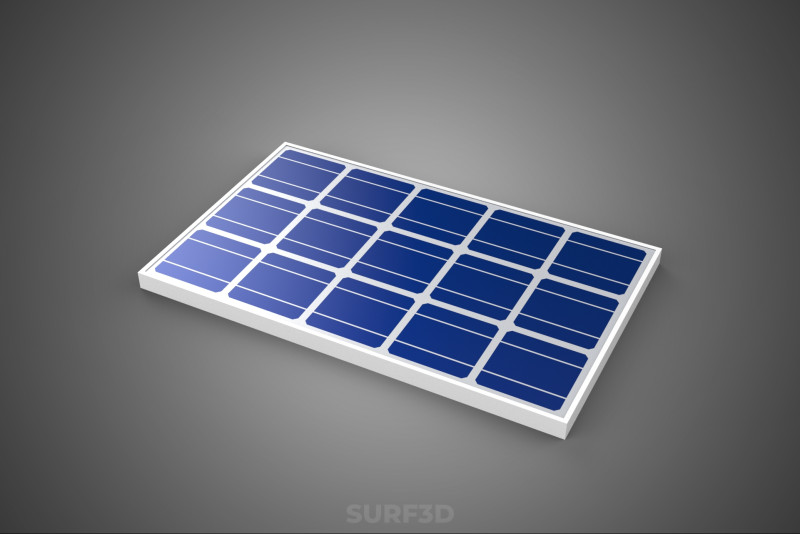
- 利用可能フォーマット: Rhinoceros (.3dm) 139.51 kb3D Studio (.3ds) 16.25 kbBlender3D (.blend) 115.10 kbCollada (.dae) 30.45 kbAutodesk AutoCAD (.dwg) 292.21 kbAutodesk FBX (.fbx) 42.92 kbGLB (.glb / .gltf) 14.30 kbIGES (.iges) 96.34 kbAutodesk 3DS MAX (.max) 143.62 kbWavefront OBJ (.obj) 25.37 kbACIS(.sat) 132.48 kbSketchUp (.skp) 36.68 kbSTEP (.step) 120.43 kbStereolithography (.stl) 14.61 kb
- 多角形:2592
- 頂点:3640
- アニメーション:No
- テクスチャー加工:No
- 装飾:No
- 素材:
- 低ポリ:No
- コレクション:No
- UVW マッピング:No
- 使用中プラグイン:No
- 印刷 準備:No
- 3D スキャン:No
- 成人コンテンツ:No
- PBR:No
- AIトレーニング:No
- ジオメトリ:Poly NURBS
- 展開済 UVs:Unknown
- ビュー:194
- 日付: 2025-08-28
- アイテム ID:595352
長方形太陽電池 太陽光発電パネル 再生可能太陽光エネルギー 3Dモデル 3dm, 3ds, blend, dae, dwg, fbx, glb, iges, max, obj, sat, skp, step, stl, から surf3d
High-quality 3D assets at affordable prices — trusted by designers, engineers, and creators worldwide. Made with care to be versatile, accessible, and ready for your pipeline.
Included File Formats
This model is provided in 14 widely supported formats, ensuring maximum compatibility:
• - FBX (.fbx) – Standard format for most 3D software and pipelines
• - OBJ + MTL (.obj, .mtl) – Wavefront format, widely used and compatible
• - STL (.stl) – Exported mesh geometry; may be suitable for 3D printing with adjustments
• - STEP (.step, .stp) – CAD format using NURBS surfaces
• - IGES (.iges, .igs) – Common format for CAD/CAM and engineering workflows (NURBS)
• - SAT (.sat) – ACIS solid model format (NURBS)
• - DAE (.dae) – Collada format for 3D applications and animations
• - glTF (.glb) – Modern, lightweight format for web, AR, and real-time engines
• - 3DS (.3ds) – Legacy format with broad software support
• - 3ds Max (.max) – Provided for 3ds Max users
• - Blender (.blend) – Provided for Blender users
• - SketchUp (.skp) – Compatible with all SketchUp versions
• - AutoCAD (.dwg) – Suitable for technical and architectural workflows
• - Rhino (.3dm) – Provided for Rhino users
Model Info
• - All files are checked and tested for integrity and correct content
• - Geometry uses real-world scale; model resolution varies depending on the product (high or low poly)
• • - Scene setup and mesh structure may vary depending on model complexity
• - Rendered using Luxion KeyShot
• - Affordable price with professional detailing
Buy with confidence. Quality and compatibility guaranteed.
If you have any questions about the file formats, feel free to send us a message — we're happy to assist you!
Sincerely,
SURF3D
Trusted source for professional and affordable 3D models.
More Information About 3D Model :
A rectangular solar cell photovoltaic panel is an engineered device designed to convert solar radiation directly into electrical energy via the photovoltaic effect. This technology represents a cornerstone of modern renewable energy infrastructure, enabling the generation of clean, sustainable power from the sun and playing a critical role in reducing reliance on fossil fuels and mitigating environmental impact.
The fundamental components of such a panel are individual **solar cells**, which are often rectangular or pseudo-square in shape to optimize packing density within the module structure. These cells are predominantly fabricated from semiconductor materials, most commonly silicon (either monocrystalline or polycrystalline). A typical silicon solar cell features a P-N junction, formed by doping distinct layers of silicon to create positive (p-type) and negative (n-type) regions. When photons from sunlight strike the cell, their energy is absorbed, exciting electrons within the semiconductor material. If the photon energy exceeds the material's bandgap, these electrons gain sufficient energy to break free from their atomic bonds. The electric field at the P-N junction then separates these charge carriers (electrons and holes), directing electrons towards the n-type region and holes towards the p-type region, thereby creating a potential difference. Metal contacts on the cell's surface collect these separated electrons, facilitating the flow of an electric current when an external circuit is connected.
Individual solar cells, which typically produce a low voltage (e.g., 0.5-0.6 V), are interconnected in series to achieve a desired operating voltage for the panel and in parallel to increase current capacity. This assembly of interconnected cells forms a **photovoltaic panel**, also known as a solar module. The panel structure is engineered for durability and protection against environmental stressors. It typically comprises: a transparent, tempered glass front layer for impact resistance and optimal light transmission; an encapsulant material, such as Ethylene Vinyl Acetate (EVA), which laminates the cells, providing electrical insulation and protection from moisture and vibration; a robust backsheet (e.g., Tedlar) for further electrical insulation and moisture barrier; and an anodized aluminum frame for structural integrity, ease of mounting, and grounding. A junction box, typically located on the panel's rear, houses bypass diodes and provides terminals for electrical connections.
The operating principle, known as the **photovoltaic effect**, ensures that when solar radiation impacts the semiconductor material, incident photons are absorbed, generating electron-hole pairs. The inherent electric field of the P-N junction separates these carriers, driving electrons to one side and holes to the other, establishing a voltage. When an external load is connected, the accumulated electrons flow through the circuit, generating direct current (DC) electricity, which can be utilized directly or converted to alternating current (AC) by an inverter for grid compatibility.
The primary energy source for these panels is the sun, which provides **renewable sun energy** in the form of virtually inexhaustible solar radiation. Harnessing this energy through photovoltaic panels offers significant environmental advantages: it produces no greenhouse gas emissions, air pollutants, or water contaminants during operation, thereby contributing substantially to climate change mitigation and improved air quality. The renewable nature of solar energy ensures it can be utilized indefinitely without depletion, offering a sustainable alternative to finite fossil fuels.
Rectangular solar cell photovoltaic panels are highly versatile and deployed across a broad spectrum of applications. These include: **residential** rooftop installations for household electricity generation; **commercial and industrial** large-scale rooftop or ground-mounted systems for businesses and factories; **utility-scale** solar farms comprising thousands of panels feeding electricity into national grids; **off-grid systems** providing power to remote locations where grid connection is impractical or unavailable (e.g., rural homes, telecommunications towers, navigational aids); and **specialized applications** such as powering satellites, calculators, and portable electronic devices.
The performance and electrical output of a photovoltaic panel are influenced by several factors, including the efficiency of the individual solar cells, the intensity of solar irradiance, ambient temperature, shading, and the panel's orientation and tilt angle relative to the sun. Panel efficiency, typically ranging from 15% to over 22% for commercial silicon-based modules, quantifies the percentage of incident solar energy converted into electricity. Continuous advancements in material science and manufacturing processes are consistently improving efficiency and reducing costs, making solar power an increasingly competitive and viable energy solution.
KEYWORDS: Photovoltaic panel, Solar cell, Renewable energy, Solar power, Photovoltaic effect, Solar module, Semiconductor, Silicon, Monocrystalline, Polycrystalline, P-N junction, Solar radiation, Electricity generation, Direct current (DC), Inverter, Clean energy, Sustainable energy, Energy independence, Greenhouse gas reduction, Climate change mitigation, Energy efficiency, Grid-**** system, Off-grid system, Solar farm, Encapsulation, EVA (Ethylene Vinyl Acetate), Tempered glass, Junction box, Carbon footprint, Solar array
フォーマットが必要ですか?
異なるフォーマットが必要な場合、サポートチケットを開き、注文をしてください。3Dモデルをこれらに変換できます: .stl, .c4d, .obj, .fbx, .ma/.mb, .3ds, .3dm, .dxf/.dwg, .max. .blend, .skp, .glb. 3D シーンは変換しません .step、.iges、.stp、.sldprt などの形式。!使用情報
長方形太陽電池 太陽光発電パネル 再生可能太陽光エネルギー - このロイヤリティフリーの3Dモデルは、基本ライセンスまたは拡張ライセンスに従って、個人および商用目的で使用できます。基本ライセンスは、デジタル広告、デザインおよび視覚化プロジェクト、ビジネスソーシャルメディアアカウント、ネイティブアプリ、ウェブアプリ、ビデオゲーム、物理またはデジタル最終製品(無料および有償)など、ほとんどの標準的な使用事例をカバーしています。
拡張ライセンスには、基本ライセンスで付与されるすべての権利が使用制限なしで含まれており、ロイヤリティフリーの条件の下で、3Dモデルを無制限の商用プロジェクトで使用できます。
詳細を読む


 English
English Español
Español Deutsch
Deutsch 日本語
日本語 Polska
Polska Français
Français 中國
中國 한국의
한국의 Українська
Українська Italiano
Italiano Nederlands
Nederlands Türkçe
Türkçe Português
Português Bahasa Indonesia
Bahasa Indonesia Русский
Русский हिंदी
हिंदी